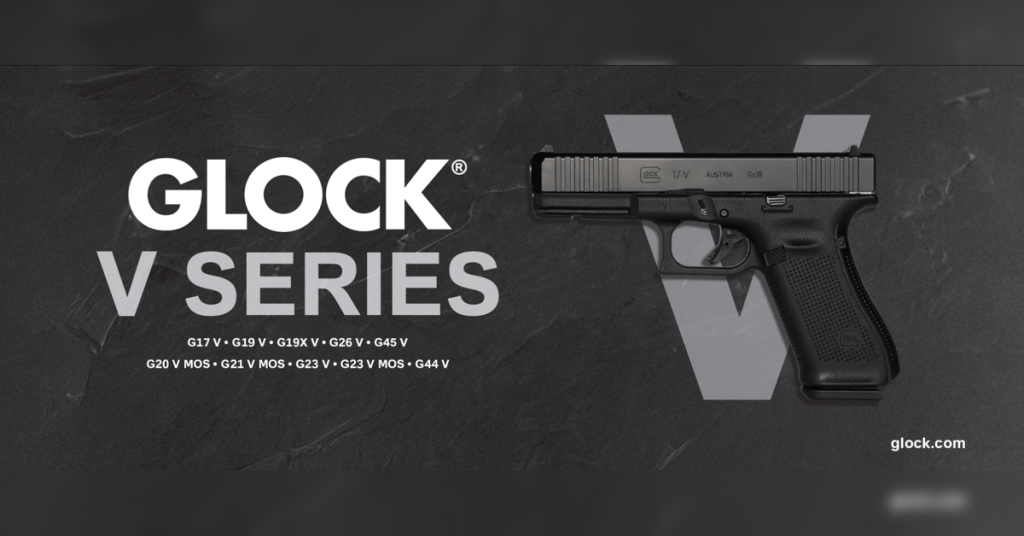

Glock has quietly made waves across the firearms industry after publishing a long list of discontinued pistol models on its official website. The announcement has fueled widespread speculation about the company’s next evolution — rumored to be a new lineup referred to as the “V Series.”
While details remain limited, this move signals a pivotal shift for one of the most iconic handgun manufacturers in the world. Here’s what’s confirmed, what’s rumored, and what it could mean for gun owners, dealers, and everyday shooters.


Glock has confirmed that it is reducing its commercial portfolio to focus on innovation and future growth. On its official site, dozens of handguns across various generations are now listed as discontinued.
Models like the G17 Gen4, G17L Classic, G22 Gen3/Gen4, and several .40-caliber variants are no longer in production. Many of these were legacy designs that served law enforcement and civilian markets for decades.
This does not mean all Gen 3, 4, or 5 pistols are gone — Glock continues to produce several flagship Gen 5 handguns. However, the discontinued list is substantial enough to signal that a strategic shift is well underway.
Recent years have brought increased scrutiny toward handguns that can be easily modified using third-party components or conversion devices — sometimes called “switches.” Multiple lawsuits and legislative efforts have placed Glock under pressure to demonstrate proactive compliance and product safety improvements.
By refining its catalog and potentially redesigning its internals, Glock can reduce liability exposure and show regulators that it’s addressing concerns about illegal modifications.
Glock’s catalog had grown massive over the past two decades, with overlapping models across multiple generations. Simplifying production allows the company to focus on its best-selling and most modern designs.
Fewer SKUs mean faster production, better quality control, and improved parts compatibility for dealers and consumers alike.
With competitors like SIG Sauer, Walther, and Smith & Wesson rolling out modular, optics-ready pistols, Glock has every reason to modernize its brand image. A new lineup could bring redesigned ergonomics, improved trigger systems, and fresh marketing appeal while maintaining the reliability Glock is known for.
The most persistent rumor circulating within the firearm community is the introduction of a new Glock V Series — a lineup designed to replace many of the discontinued models.
According to industry insiders and leaked distributor communications, the V Series may feature redesigned slides, internal modifications to prevent illegal conversions, and improved component tolerances for reliability.
Some sources claim that Glock is using this opportunity to introduce a new naming system, moving away from “Gen” labels and toward a modernized platform architecture.
While none of these details have been officially confirmed by Glock, the pattern of discontinued listings strongly suggests that a new product family is on the horizon.
For firearm dealers, this transition creates both challenges and opportunities:
Inventory Strategy: Discontinued models may rise in collector value or short-term demand. If you have Gen 3 or Gen 4 stock, this is an ideal time to promote “last run” inventory before it’s gone.
Product Positioning: Update your listings to highlight “discontinued” or “limited availability” models. These phrases often drive urgency and higher conversion rates.
Aftermarket Planning: Ensure your parts and accessories inventory aligns with Glock’s current and future models. Some components may soon become legacy-only items.
If you own a Glock from any recent generation, there’s no cause for concern — parts and accessories will remain available for years. However, this moment may influence how you plan your next purchase or customization project.
Existing Owners: Now is the time to secure spare parts for your preferred generation, especially if you run a Gen 3 or Gen 4 model.
New Buyers: If you’re shopping for your first Glock, you might see prices fluctuate as certain models phase out and new ones approach launch.
Custom Work: Services like grip stippling, slide milling, and optic mounting may require generation-specific parts. If you’re planning custom work, confirm compatibility before starting.
Glock has not issued a timeline for new model releases, but its public statement about “focusing on future innovation” implies development is already underway.
The next phase of Glock pistols — whether officially called the “V Series” or something else — will likely emphasize:
Enhanced safety systems
Streamlined manufacturing
Improved compliance with U.S. and international regulations
Continued support for law enforcement and civilian shooters
Until an official release announcement is made, much of the firearm community will be watching Glock closely. For now, we know one thing for certain — the company is evolving.
As Glock adjusts its lineup, smart shooters and dealers are using this period to prepare:
Check your inventory and identify discontinued models still in stock.
Secure parts and accessories for your preferred generation.
Stay informed by subscribing to manufacturer updates and trusted firearm news outlets.
Bookmark this blog — we’ll update it as soon as new official details about the Glock V Series become available.
Glock’s decision to reduce its commercial lineup and focus on innovation marks a major turning point in the company’s history. Whether this leads directly to a new V Series or a broader modernization strategy, the direction is clear — Glock is preparing for the next generation of handgun design.
For now, shooters and dealers alike should pay close attention. The Glock name has always meant durability, consistency, and trust. Whatever comes next will likely build on that foundation with a renewed focus on safety, compliance, and performance.